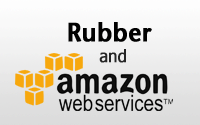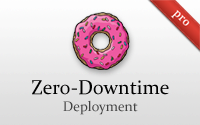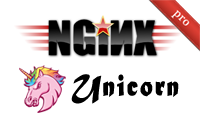Categories
- Active Record
- Active Resource
- Active Support
- Administration
- Ajax
- APIs
- Authentication
- Authorization
- Background Jobs
- Caching
- Code Walkthrough
- Controllers
- Debugging
- Deployment
- eCommerce
- Forms
- Mailing
- Models
- Performance
- Plugins
- Production
- Rack
- Rails 2.0
- Rails 2.1
- Rails 2.2
- Rails 2.3
- Rails 3.0
- Rails 3.1
- Rails 3.2
- Rails 4.0
- Refactoring
- Routing
- Search
- Security
- Testing
- Tools
- Views
Deploying to a VPS
Deploying a Rails application can be overwhelming because there are so many different options. Here I present a pattern for deploying a Rails app to a VPS using nginx, Unicorn, PostgreSQL, rbenv and more.
(18 minutes)
Rubber and Amazon EC2
Deploying to Amazon EC2 allows you to scale an application quickly. Learn how to use Rubber to deploy to the cloud with just a few commands and monitor the cluster with various web tools.
(17 minutes)
Trinidad
Trinidad is designed to serve JRuby web applications and gives you the power of Java while still keeping the feel of traditional Rails deployment. Here I show how to setup a Capistrano recipe, configure it, and more.
(15 minutes)
Memcached & Dalli
Memcached is an excellent cache store, and Dalli is the best way to interact with it through Ruby. Here I show various ways to use Memcached in a Rails app including how to set it up in production.
(12 minutes)
Zero-Downtime Deployment
Here I show how to accomplish zero-downtime deployment using Unicorn. I also cover gotchas when working with migrations and how to put up a maintenance page when you do need to take down the site.
(12 minutes)
Asset Pipeline in Production
The Asset Pipeline is very useful, but it can be a pain in production. Here I show why it works the way it does, and how to customize it to fit your deployment setup.
(13 minutes)
Nginx & Unicorn
Nginx and Unicorn make a killer-combo for hosting a Rails application in production. Learn how to configure each in a Vagrant virtual machine in this episode.
(19 minutes)







